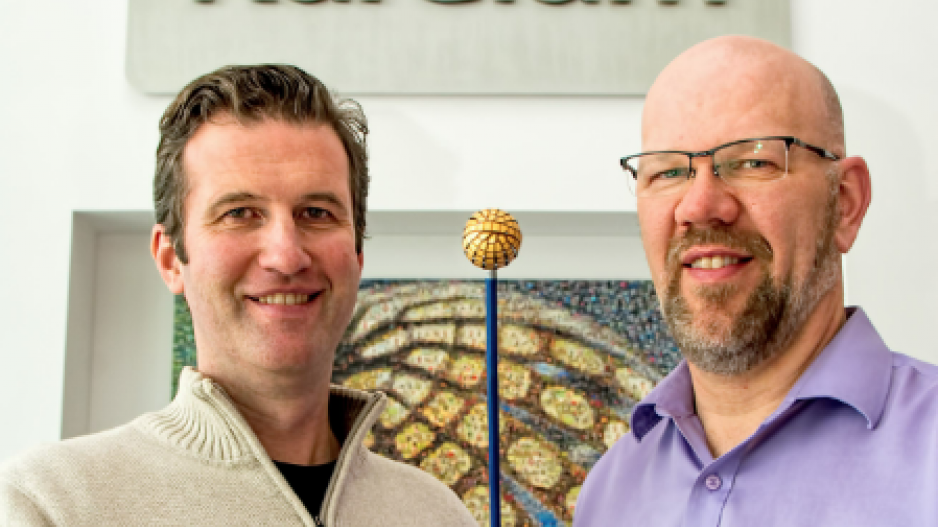A walk through Kardium Inc.’s Burnaby office will reveal a wall of fame of sorts, as discarded prototypes of medical devices are on display as if they were meant for a high school trophy case.
There likely isn’t room in the medical-technology firm’s facility to showcase all the prototypes developed before settling on a device Kardium believes can more effectively treat atrial fibrillation.
“Between that and the versions we don’t have on that wall, we probably went through hundreds of iterations,” says Kevin Chaplin, the company’s vice-president of business development.
Atrial fibrillation is an irregular heartbeat that can lead to heart clots, strokes and heart failure. It’s the most common form of arrhythmia, according to the Heart and Stroke Foundation of Canada, affecting an estimated 350,000 Canadians.
Kardium has spent 11 years developing its flagship device, hence the long history of prototypes.
The company has just completed a European study to receive its certification from regulators, and Chaplin expects to start selling the device to electrocardiologists in Germany and Switzerland later this year.
“For medical devices it’s actually much easier to get approval in Europe than it is in North America,” he said, adding the device will likely be available in Canada later this year but will not hit the American markets for at least three years.
The device is about one metre long and features a handle at one end to control it and an array of electrodes at the other end.
Doctors insert the device into patients via a needle in the groin area and insert a small tube into the femoral vein, through which the device’s electrodes travel up to the heart.
The electrodes map the heart’s activity and then burn tissue inside to create scarring, stop the bad electric signals and return the heart to its normal rhythm.
Current systems feature one electrode. Kardium’s has 122 electrodes, which Chaplin said will reduce the process from about four hours to approximately one hour.
“The goal for us is for the doctors to do the procedure more quickly and have a higher success rate so that basically they end up doing more,” he said.
“The sales model is to sell units to the doctor. Basically, [the doctor can] use as many as he needs to treat as many patients as he can and ultimately treat more patients because we have a better success rate.”
The equipment used for current procedures costs from US$8,000 to US$12,000 per procedure. Kardium’s costs for the one-time-use device will be comparable to that.
Dr. Lesley Esford, president and CEO of LifeSciences BC, was working for the National Research Council Industrial Research Assistance Program when Kardium launched in 2007.
“I knew they were something that was kind of special in that they were trying to get at a big problem,” she said.
“They took a long time to make sure they understood what the problem was to ensure that their solution was going to make a difference.”
While it took more than a decade for Kardium to get to the commercialization stage, Esford said it’s getting easier for newer B.C. medical-technology companies as the local market matures.
“It was a struggle because they didn’t have other companies that had gone through that journey and they couldn’t point to people to say, ‘Oh, here’s someone who has successfully grown a company, commercialized a product,’” she said.
But the pedigree from which the company sprang is notable.
After Eastman Kodak Co. purchased Burnaby-based Creo for US$980 million in 2005, Creo founder Dan Gelbart and Creo’s former CEO, Amos Michelson, moved on to launch Kardium.
Since then the company has relied on private investors to fund its research and development, but Chaplin said that with the commercialization of its product, Kardium is considering an initial public offering some time in the future as a way to raise more capital.
“We have a very strong angel [investment] community here. In the case of Kardium, you had people who had very successful exits that continue to invest in the ecosystem,” Esford said.
“When I look at this ecosystem, the more leaders that we have that have successfully grown companies, the easier it’s going to be for those that follow.”




